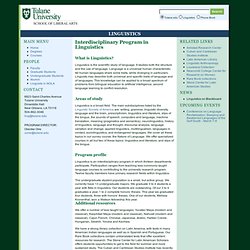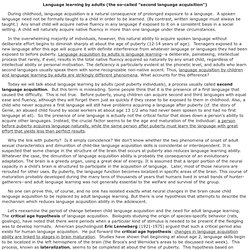

Free Online Language Courses.
Linguistics. Learning. Books. Lingro: The coolest dictionary known to hombre! Lexique français-anglais. Philosopher Bios. Dead Philosophers in Heaven null.

I Read Banned Books Hand Stamped Brass Bracelet by CobwebCorner. Nadeau & Barlow. Welcome - The Rosetta Project. The Language Database. Indo-European Languages: Free Online Tutorials & Exercises. Numbers in Indo-European Languages. Ethnologue, Languages of the World. College Library. International Phonetic Alphabet (IPA) Chart Unicode “Keyboard” University - School of Liberal Arts - Linguistics. What is Linguistics?

Linguistics is the scientific study of language. It studies both the structure and the use of language. Language is a universal human characteristic. All human languages share some traits, while diverging in particulars. Linguists may describe both universal and specific traits of language and of languages. Areas of study Linguistics is a broad field. Program profile Linguistics is an interdisciplinary program in which thirteen departments participate. The undergraduate student population is a small, but active group. Additional resources We offer a number of less taught languages: Yucatec Maya (modern and classical), Kaqchikel Maya (modern and classical), Nahuatl (modern and classical), Cajun French, Chinese, Japanese, Arabic, Haitian Creole, Hungarian, Swahili, Yoruba and Kechwa.
We have a strong library collection on Latin America, with texts in many American Indian languages as well as in Spanish and Portuguese. Type IPA phonetic symbols - online keyboard. English language, alphabet and pronunciation. English is a West Germanic language related to Scots, Dutch, Frisian and German. with a significant amount of vocabulary from Old Norse, Norman French, Latin and Greek, and loanwords from many other languages.

Approximately 341 million people speak English as a native language and a further 267 million speak it as a second language in over 104 countries including the UK, Ireland, USA, Canada, Australia, New Zealand, South Africa, American Samoa, Anguilla, Antigua and Barbuda, Aruba, Bahamas, Barbados, Belize, Bermuda, Botswana, British Indian Ocean Territory, British Virgin Islands, Brunei, Cameroon, Canada, Cayman Islands, and the Cook Islands. A brief history of English Old English English evolved from the Germanic languages brought to Britain by the Angles, Saxons, Jutes and other Germanic tribes from about the 5th Century AD. These languages are known collectively as Anglo-Saxon or Old English, and began to appear in writing during the 5th century AD. More details of Old English Source: Linguistics 201: Language Learning by Adults. Language learning by adults (the so-called "second language acquisition") During childhood, language acquisition is a natural consequence of prolonged exposure to a language.

A spoken language need not be formally taught to a child in order to be learned. (By contrast, written language must always be taught.) Any small child will acquire native fluency in any language if exposed to it on a consistent basis in a social setting. A child will naturally acquire native fluency in more than one language under these circumstances. In the overwhelming majority of individuals, however, this natural ability to acquire spoken language without deliberate effort begins to diminish sharply at about the age of puberty (12-14 years of age). Today we will talk about language learning by adults (post puberty individuals), a process usually called second language acquisition.
Why the link with puberty? Problems with the critical age hypothesis. 1) Children do not always recover from aphasia either.